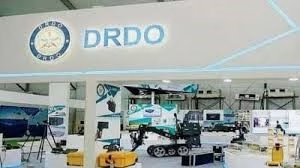In the last few years, artificial intelligence has quietly infiltrated the world of software development — not to replace programmers, but to work with them. One of the most talked-about tools? GitHub Copilot, a coding assistant powered by OpenAI’s Codex.
But with all the hype surrounding AI-generated code, a big question emerges: Can AI truly compete with human programmers? Or is it just another tool in the coder’s toolkit?
Let’s dig in.
🤖 What Is GitHub Copilot, Really?
At its core, GitHub Copilot is like autocomplete on steroids. Type a comment or a function name, and it suggests lines of code, entire functions, or even boilerplate classes. It’s trained on a vast amount of publicly available code — and it’s fast, scarily fast.
Need a Python script to fetch weather data from an API?
Just start typing a comment like # fetch weather data from OpenWeatherMap API and boom — Copilot delivers a full-function template in milliseconds.
That’s not just convenient — it’s revolutionary.
👩💻 Human Programmers: The Irreplaceable Architects
Here’s the thing: Copilot is impressive, but it’s not a silver bullet. It doesn’t understand the code the way a human does. It doesn’t think in terms of architecture, trade-offs, security risks, or business logic.
A seasoned developer:
- Designs scalable systems
- Writes clean, maintainable code
- Reviews code critically for performance and readability
- Navigates ambiguous product requirements
- Collaborates, mentors, and innovates
That’s a lot more than just writing lines of code.
Copilot can suggest code, but only humans can shape software.
🔍 Practical Examples: Copilot in the Wild
Let’s say you’re building a web app with Django.
- Task 1: Create a login page
Copilot? Pretty useful. It’ll generate forms, views, and even a basic HTML template. - Task 2: Implement a custom OAuth2 flow with multi-factor authentication
Copilot? Now it’s guessing. You’ll need a human brain to make smart choices about libraries, flow, and security.
Or maybe you’re debugging a memory leak in a real-time C++ application. Copilot might offer syntax-correct snippets, but understanding multithreaded behavior, performance bottlenecks, or hardware constraints? That’s deep domain knowledge.
⚖️ Copilot vs. Human: Collaboration, Not Competition
This isn’t a showdown where one must lose. It’s a collaboration. Here’s how:
| Task Type | Best for Copilot | Best for Humans |
|---|---|---|
| Boilerplate code | ✅ | |
| Code documentation | ✅ | ✅ |
| Creative architecture design | ✅ | |
| Security auditing | ✅ | |
| Fast prototyping | ✅ | ✅ |
| Debugging complex bugs | ✅ |
Think of it like this: Copilot is your tireless assistant, not your replacement. It accelerates your work, reduces grunt work, and even sparks creativity.
🧠 The Real Power: Human-AI Pair Programming
This new model is what excites me the most. When humans and AI team up:
- Code gets written faster.
- Developers focus more on thinking and less on typing.
- Learning becomes more interactive (newbies can get real-time guidance).
- Teams can test out more ideas in less time.
It’s like having a junior dev who knows a bit about everything, works 24/7, and doesn’t complain.
But remember — it needs constant supervision. Copilot can hallucinate, write insecure code, or misunderstand your intent. You’re still the pilot; it’s just your co-pilot.
🚀 Final Thoughts: The Future of Programming Isn’t Either/Or
We’re not headed toward a world where AI writes all the code and humans become obsolete. Instead, we’re entering a new era of augmented coding — where human logic, ethics, and creativity are supported by machine efficiency.
If you’re a developer, embrace AI coding assistants. They won’t take your job — but the developers who know how to use them just might.
So next time you write code, fire up Copilot. Let it suggest. Let it inspire. But always remember: the real magic still happens in your brain.
Loved this post? Follow us at paksoft.net for more deep dives into the future of tech. We explore everything from AI to quantum sensors — and how innovation is reshaping the world around us.





